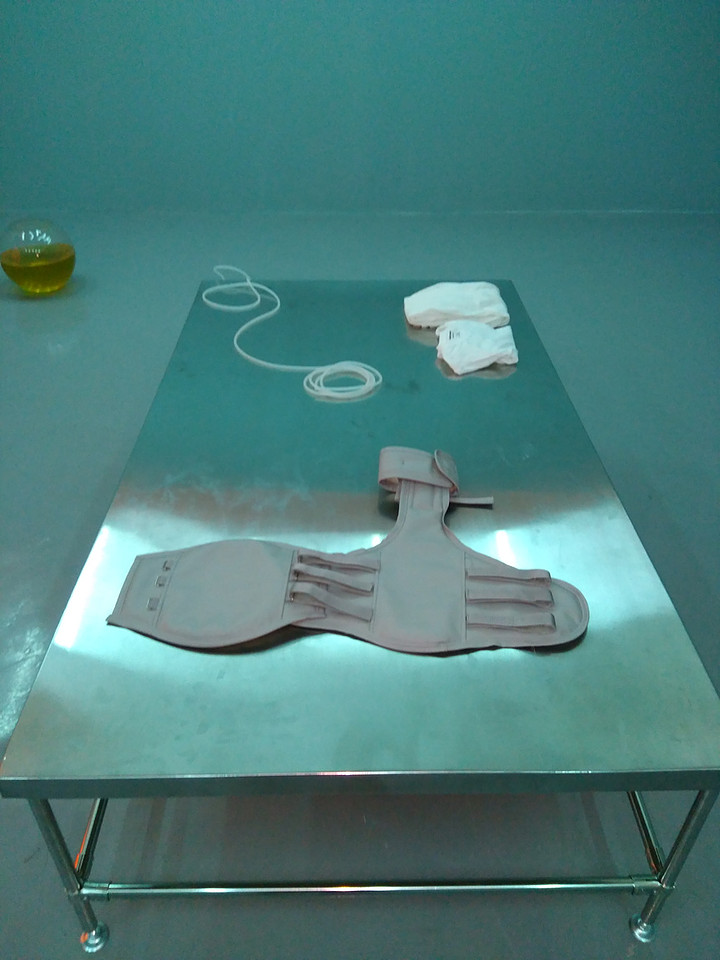Early Years Project #2 Anticipation Organised by Bangkok Art and Culture Centre
EARLY YEARS PROJECT # 2 ANTICIPATION
Organised by Bangkok Art and Culture Centre
An Incubating Project for Young Artists
from 1 December 2017 to 11 March 2018.
Bangkok Art and Culture Center - BACC
The Bangkok Art and Culture Center - BACC is a modern building located at Rama I Road in the center of Bangkok. It is located next to the MBK and few hundred meters from the CentralWord.
The BACC is the center of contemporary art and culture in Bangkok.
It is a young, white, progressive building but, at the same time, it contains the characteristic shapes of the Thai tradition.
It has nine levels, two underground, and constitute an open museum. In each floor there are continuous exhibitions. Space is circular, with a nice open staircase, from the top there is a complete observation of the entire interior.
The epicenter of the exhibition are the three main rooms from the seventh to the ninth floor. From the summit, we have a beautiful, total observation, absorbed by the roundness like a modern stupa.
In these places, we can understand Thai contemporary art.
The BACC is multi-artistic: there are cinemas, auditoriums, theaters, meeting rooms and conferences.
Furthermore, the center contains an elegant and open library; a silent, almost religious place; on the shelves we can find specific books, artistic that we can read in absolute tranquility.
A center is a place available because some performaces can be used by everyone with a simple request to exhibit their works.
The place is pop even for the presence of many unusual shops with many artistic, beautiful and tasteful objects. Paintings, statues, games, contemporary art are representative products of the dynamism of Thai culture.
The BACC is a pleasant place also for the presence of many bars, and shops with organic local production, coming from the countryside.
The exhibition of Thai artists EARLY YEARS PROJECT # 2 ANTICIPATION organized by the BACC Exhibition Department is over on March 11th, 2018.
Ten young artists have exhibited their contemporary works:
Kanich Khajohnsri, Jarasporn Chumsri, Chanson Dechasophon, Tanaphon Inthong, Yingyod Yenarkarn, Rungruang Sittirerk, Waret Khunacharoensap, Saroot Supasuthivech, Suhaidee Sata, Alisa Chunchue.
In the conception of contemporary Thai art, there is a strong link to the canons of tradition.
"She'd like to have a chance in a next life," she smiled.
"In the old days, people woke up at dawn to cook food to give to monks. That's why they had good meals to eat. But these days just buy ready-to-eat food in plastic bags for the monks." (1) tells us the Thai poet Prabhassorn Sevikul.
It is reality, plastic is already dominating in our daily existence, we use it for eating food, for doing everything, it is everywhere in our lives.
It is not a problem in the future because plastic is our present: we go quickly and without looking around, without discovering new human emotions. Art gives us a truce, allows us a little break, through the representation of the many every day objects now irreplaceable for our corrupt behavior.
The wall of Kanich Khajohnsri ค ณิ ช ขจ ร ศรี is composed only of both large and small plastic boxes. It is the installation called Area Trans-form. Inside the boxes, there is our daily life but above all, we see our soul, which is also plasticized.
Plastic is also the cause of our lack of communication. Waret Khunacharoensapว เร ศ คุณา เจริญทรัพย์ is
taught in his work: two men in uniform, surely two soldiers, are at the opposite side of the hall. They can communicate only through a walkie-talkie connected by barbed wire.
We find the same barbed wire in Yingyod Yenarkarn ยิ่ง ยศ เย็น อาคาร in the work I Try to Move Forword. Barbed wire is a crown of thorns on anthropomorphic bricks and black boots. The place is fenced, bordered. Man is suffering, in the head has thorns which have marked his body and the future. It is limited, the disaster of life has petrified our lives.
Tanaphon Inthong ธน ภณ อินทร์ ทอง has placed in his installation a cold, old desk, on which there is meat, not human, but it could be because it is abandoned on the table as if it were a cannibalistic representation.
Jaraspron Chumsri จรัส พร ชุม ศรี has painted Instrend. Two women turn their heads towards us as if they wanted to tell us something. The context is abstract, the color heavy and dominant. They would like to talk but they can not.
We are watching them as if they were going to give us a warning.
We find the same emotional tension in Overdose, the inexpressive and distressing installation of Alisa Chunchue อ ลิ สา ฉุน เชื้อ.
It's a cold aluminum bed, an autopsy table in which lifeless people are supported. But in the work in their place, we find medical objects. With the author, the disorientation is obvious, a detached light does not allow us other solutions.
(1) Prabhassorn Sevikul, Letter from a Blind Old Man, First published, Bangkok, Nilubol Publishing House, July 2009






